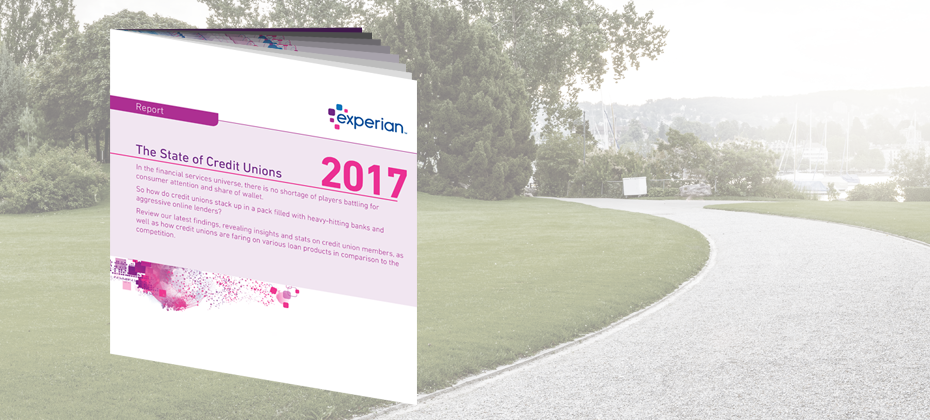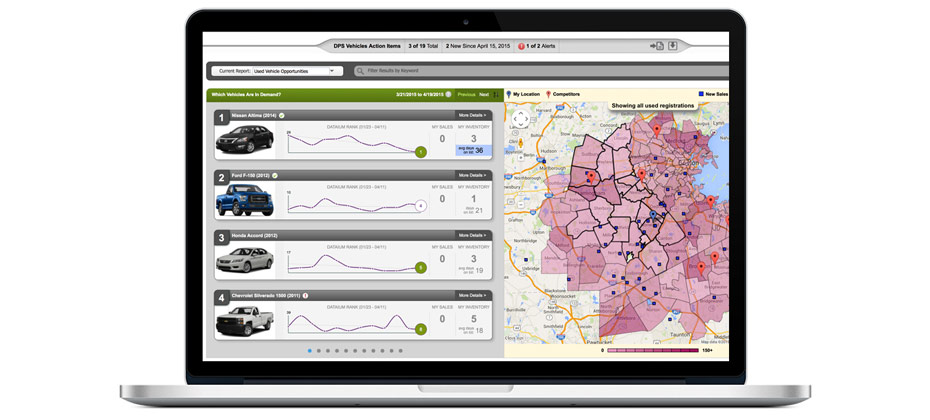Latest Posts

On June 7, the Consumer Financial Protection Bureau (CFPB) released a new study that found that the ways “credit invisible” consumers establish credit history can differ greatly based on their economic background. The CFPB estimated in its May 2015 study "Data Point: Credit Invisibles" that more than 45 million American consumers are credit invisible, meaning they either have a thin credit file that cannot be scored or no credit history at all. The new study reviewed de-identified credit records on more than one million consumers who became credit visible. It found that consumers in lower-income areas are 240 percent more likely to become credit visible due to negative information, such as a debt in collection. The CFPB noted consumers in higher-income areas become credit visible in a more positive way, with 30 percent more likely to become credit visible by using a credit card and 100 percent more likely to become credit visible by being added as a co-borrower or authorized user on someone else’s account. The study also found that the percentage of consumers transitioning to credit visibility due to student loans more than doubled in the last 10 years. CFPB’s research highlights the need for alternative credit data The new study demonstrates the importance of moving forward with inclusion of new sources of high-quality financial data — like on-time payment data from rent, utility and telecommunications providers — into a consumer’s credit file. Experian recently outlined our beliefs on the issue in comments responding to the CFPB’s Request for Information on Alternative Data. As a brand, we have a long history of using alternative credit data to help lenders make better lending decisions. Extensive research has shown that there is an immense opportunity to facilitate greater access to fair and affordable credit for underserved consumers through the inclusion of on-time telecommunications, utility and rental data in credit files. While these consumers may not have a traditional credit history, many make on-time payments for telephone, rent, cable, power or mobile services. However, this data is not typically being used to enhance traditional credit files held by the nationwide consumer reporting agencies, nor is it being used in most third-party or custom credit scoring models. Further, new advances in financial technology and data analytics through account aggregation platforms are also integral to the credit granting process and can be applied in a manner to broaden access to credit. Experian is currently using account aggregation software to obtain consumer financial account information for authentication and income verification to speed credit decisions, but we are looking to expand this technology to increase the collection and utilization of alternative data for improving credit decisions by lenders. Policymakers should act to help credit invisible consumers While Experian continues to work with telecommunications and utility companies to facilitate the furnishing of on-time credit data to the nationwide consumer reporting agencies, regulatory barriers continue to exist that deter utility and telecommunications companies from furnishing on-time payment data to credit bureaus. To help address this issue, Congress is currently considering bipartisan legislation (H.R. 435, The Credit Access and Inclusion Act of 2017) that would amend the FCRA to clarify that utility and telecommunication companies can report positive credit data, such as on-time payments, to the nation' s credit reporting bureaus. The legislation has bipartisan support in Congress and Experian encourages lawmakers to move forward with this important initiative that could benefit tens of millions of American consumers. In addition, Experian believes policymakers should more clearly define the term alternative data. In public policy debates, the term "alternative data" is a broad term, often lumping data sources that can or have been proven to meet regulatory standards for accuracy and fairness required by both the Fair Credit Reporting Act and the Equal Credit Opportunity Act with data sources that cannot or have not been proven to meet these standards. In our comment letter, Experian encourages policymakers to clearly differentiate between different types of alternative data and focus the consumer and commercial credit industry on public policy recommendations that will increase the use of those sources of data that have or can be shown to meet legal and societal standards for accuracy, validity, predictability and fairness. More info on Alternative Credit Data More Info on Alternative Financial Services

Summer spending A study by Experian and Edelman Berland noted that travelers relied heavily on credit for vacation purchases last year — with many planning to charge more than half of their vacation expenses this summer. Of those surveyed about their 2015 summer purchases: 86% spent money on a summer vacation in 2015. $2,275 was spent per person, with $1,308 of that being credit card purchases. 35% hadn’t saved in advance. 61% spent more than they planned. Summer brings vacations and credit card use. By identifying consumer credit trends like these, you can target new customers and identify balance transfer opportunities. Learn more>

How do credit unions stack up in a pack filled with heavy-hitting banks and aggressive online lenders? Do credit scores, debt levels and utilization rates look different between credit union members and non-credit union members? Where is the greatest concentration of credit unions in the country? Experian took a deep dive into the data and performance surrounding the credit union universe in their first-ever “State of Credit Unions” report, featuring insights utilizing data from both 2015 and 2017. What did the analysis reveal? “In general, we saw credit unions continuing to increase their auto lending market share, but we also saw them growing their member relationships and increasing market share in mortgage, personal loan and bankcard,” said Michelle Cocchiarella, the Experian analyst who pulled the data. A few of the key data points include: Credit union auto originations increased from 1.54M new accounts in Q1 2015 to 1.93M in Q1 2017 – a 25% increase. And not only did originations rise dramatically in this space, but credit unions topped banks, captives and other finance sources. Credit union auto market share rose 5% between Q1 2015 and Q1 2017, while bank market share declined by 4%. Credit unions also saw growth in the personal loan arena, with market share rising 2% between Q1 2015 and Q1 2017. Still, with the rise of online lenders, that sector saw a 7% increase during the same period. Banks declined by 5%. While most bankcards are opened with banks, credit unions did experience an 18% increase in bankcard originations from Q1 2015 to Q1 2017. Market share rose 1% between Q1 2015 and Q1 2017 for credit unions in the bankcard space. Banks reign with market share at 96%. Credit union mortgage market share rose 7% between Q1 2015 and Q1 2017. Banks declined by 4%. “Collectively, the credit union space is enjoying remarkable membership and loan growth,” said Scott Butterfield, principal of Your Credit Union Partner, a consulting agency to credit union leaders. “However, this bountiful experience is not enjoyed at all credit unions. The financial services environment has never been more competitive. The best credit unions are relentless at investigating a better way to find and serve more members, and as such, are seeing great growth.” For the complete results, including insights on how credit union members with at least one trade compare to non-credit union members, access the report on our credit union insights page.

When discussing automotive lending, it seems like one term is on everyone’s lips: “subprime auto loan bubble.” There’s always someone who claims that the bubble is bursting. But a level-headed look at the data shows otherwise. According to our Q1 2017 State of the Automotive Finance Market report, 30-day delinquencies dropped and subprime auto lending reached a 10-year record low for Q1. The 30-day delinquency rate dropped from 2.1 percent in Q1 2016 to 1.96 percent in Q1 2017, while the total share of subprime and deep-subprime loans dropped from 26.48 percent in Q1 2016 to 24.1 percent in Q1 2017. The truth is, lenders are making rational decisions based on shifts in the market. When delinquencies started to go up, the lending industry shifted to more creditworthy customers. This is borne out in the rise in customers’ average credit scores for both new and used vehicle loans: The average customer credit score for a new vehicle loan rose from 712 in Q1 2016 to 717 in Q1 2017. The average customer credit score for a used vehicle loan rose from 645 in Q1 2016 to 652 in Q1 2017. In a clear indication that lenders have shifted focus to more creditworthy customers, super prime was the only risk tier to grow for new vehicle loans from Q1 2016 to Q1 2017. Super-prime share moved from 27.4 percent in Q1 2016 to 29.12 percent in Q1 2017. All other risk tiers lost share in the new vehicle loan category: Prime — 43.36 percent, Q1 2016 to 43.04 percent, Q1 2017. Nonprime — 17.83 percent, Q1 2016 to 16.96 percent in Q1 2017. Subprime — 10.64 percent, Q1 2016 to 10.1 percent in Q1 2017. For used vehicle loans, there was a similar upward shift in creditworthiness. Prime and super-prime risk tiers combined for 47.4 percent market share in Q1 2017, up from 43.99 percent in Q1 2017. At the low end of the credit spectrum, subprime and deep-subprime share fell from 34.31 percent in Q1 2016 to 31.27 percent in Q1 2017. The upward shift in used vehicle loan creditworthiness is likely caused by an ample supply of late model used vehicles. Leasing has been on the rise for the past several years (and is at 31.06 percent of all new vehicle financing today). Many of these leased vehicles have come back to the market as low-mileage used vehicles, perfect for CPO programs. Another key indicator of the lease-to-CPO impact is the rise in used vehicle loan share for captives. In Q1 2017, captives had 8.3 percent used vehicle loan share, compared with 7.2 percent in Q1 2016. In other findings: Captives continued to dominate new vehicle loan share, moving from 49.4 percent in Q1 2016 to 53.9 percent in Q1 2017. 60-day delinquencies showed a slight rise, going from 0.61 percent in Q1 2016 to 0.67 percent in Q1 2017. The average new vehicle loan reached a record high: $30,534. The average monthly payment for a new vehicle loan reached a record high: $509. For more information regarding Experian’s insights into the automotive marketplace, visit https://www.experian.com/automotive.

Like an unimmunized person in a roomful of flu patients, the healthcare sector continues to be at high risk of catching something unpleasant. Cyberattacks and data breaches jeopardize the well-being of healthcare organizations of every size, and too often their exposure is a result of not doing everything they can to immunize themselves against attack. In our 2017 Data Breach Industry Forecast, we predicted the profitability and uneven defenses of the healthcare sector would cause cybercriminals to continue to focus attacks on healthcare organizations. Numbers from the Identity Theft Resource Center indicate our prediction was right; by mid-year, 151 healthcare breaches have compromised more than 1.9 million records, accounting for nearly 22 percent of all 2017 breaches thus far. We also predicted: Ransomware would emerge as a top threat for healthcare organizations. Cybercriminals would expand their range of targets within the sector, causing mega breaches to broaden their focus from insurers to other organizations, including hospital networks. Electronic health records and mobile applications would increasingly be targeted. The year so far In mid-May the WannaCry ransomware cyberattack became the largest ever, affecting computer systems in more than 150 countries. Ransomware uses malicious code to infect systems, seize control and shut down user access until the affected organization or individual pays a ransom to unlock their systems. Britain’s National Health Service (NHS) was one of the largest victims of WannaCry, which infected medical devices as well as administrative PCs. The impact was widespread, affecting critical operations and causing hospitals to reject patients, doctor’s offices to shut down and emergency rooms to divert patients. Like a patient with a compromised immune system who ignores his doctor’s advice to get an annual flu shot, the NHS allegedly disregarded multiple security warnings to update and protect its systems. Cybercriminals have also expanded their targets for mega breaches beyond insurers. So far in 2017, the largest known healthcare breach in terms of number of compromised records occurred at a urology practice in Austin, Texas. ITRC statistics show nearly 280,000 records were compromised through the breach of the practice, which has eight locations in the greater Austin area. According to the practice’s official data breach notice, a ransomware attack encrypted data stored on the organization’s servers. Electronic health records were the target of cyberattacks at numerous healthcare organizations, including a fertility and menopause clinic in New Jersey, where more than 17,000 records were compromised, ITRC reports. The number, scope and impact of healthcare cyberattacks will only grow. The industry that focuses on taking care of Americans’ physical and mental health should proactively take steps to safeguard its own health by updating security measures and data breach response plans. Learn more about our Data Breach solutions

Analyzing credit scores and card balances According to a study by VantageScore® Solutions LLC, consumers with credit scores between 601 and 650 carry the largest credit card bills, at more than $10,000 — nearly 2x that of the average consumer. Other key findings include: Those with the highest scores have the largest total credit limit ($46,735), compared with just $2,816 for those with the lowest scores. The average credit card holder has $29,197 in credit lines, with an average balance of $5,720. Those with scores between 701 and 750 use an average of 27% of their available credit versus 47% for those with scores between 651 and 700. The study reinforces the importance of staying current on the latest credit trends to best identify areas of opportunity and adjust lending strategies accordingly. Make better decisions >

Risk managers, legal experts and brokers say phishing and social engineering are, by far, the biggest security threats facing their companies and clients. In fact, 80 percent of legal experts polled by Advisen for Experian Data Breach Resolution’s 2017 Cyber Risk Preparedness and Response Survey, 68 percent of brokers and 61 percent of risk managers cited phishing/social engineering as their top concern. Why do they feel that way? A look at the numbers and some insight into human nature can explain their fears — and help you understand why your organization should be just as concerned about phishing risks. By the numbers Phishing and social engineering are particularly effective forms of cyberattack because they use technology and knowledge of human nature to manipulate employees into actions that serve the attacker’s purpose. How effective are they? Employees succumbing to a targeted phishing attack was one of the top two insider risks cited by executives who responded to the Ponemon report Managing Insider Risk through Training and Culture. Sixty-one percent of information security professionals polled by Wombat Security for its 2017 State of the Phish report said their organization had been the victim of a phishing attack. According to the Ponemon Fourth Annual Preparedness Study, 38 percent of respondents are not confident they can deal with a spear phishing incident The human risk factor Phishing in general and spear phishing in particular are successful because human beings are often the chink in an organization’s cybersecurity armor. All it takes is one overly curious and under-cautious employee clicking on a suspicious email, or a well-meaning worker who responds to a seemingly authentic request for proprietary information. Those scenarios are the stuff of nightmares for information security professionals, and unfortunately they happen all too frequently. Multiple studies show that negligent employees cause more data breaches than other sources, whether they succumb to a phishing attack or lose a company laptop at the airport. However, studies also show that cybersecurity training, including a component on phishing, can help reduce employee-related risks. Training is critical Among organizations that train employees on how to spot and avoid phishing attacks, 52 percent reported they were able to see quantifiable results — fewer successful attacks — based on their training, Wombat said. Respondents to the Advisen survey stressed the importance of creating a company culture in which cybersecurity is everyone’s job and knowledge of phishing and how to thwart attacks is the norm. Employee training in cybersecurity should begin as part of the onboarding process when the worker joins your organization, and everyone should get a refresher at least annually. While 67 percent of those surveyed by Ponemon said their organizations didn’t incentivize employees to proactively protect sensitive information or report potential issues, any successful culture of security should reward those who are embracing their roles as protectors — and not just punish those who fall short. Learn more about our Data Breach solutions

The 1990s brought us a wealth of innovative technology, including the Blackberry, Windows 98, and Nintendo. As much as we loved those inventions, we moved on to enjoy better technology when it became available, and now have smartphones, Windows 10 and Xbox. Similarly, technological and modeling advances have been made in the credit scoring arena, with new software that brings significant benefits to lenders who use them. Later this year, FICO will retire its Score V1, making it mandatory for those lenders still using the old software to find another solution. Now is the time for lenders to take a look at their software and myriad reasons to move to a modern credit score solution. Portfolio Growth As many as 70 million Americans either have no credit score or a thin credit file. One-third of Millennials have never bothered to apply for a credit card, and the percentage of Americans under 35 with credit card debt is at its lowest level in more than 25 years, according to the Federal Reserve. A recent study found that Millennials use cash and debit cards much more than older Americans. Over time, Millennials without credit histories could struggle to get credit. Are there other data sets that provide a window into whether a thin file consumer is creditworthy or not? Modern credit scoring models are now being used in the marketplace without negatively impacting credit quality. For example, the VantageScore® credit score allows for the scoring of 30 million to 35 million more people consumers who are typically unscoreable by other traditional generic credit models. The VantageScore® credit score does this by using a broader, deeper set of credit file data and more advanced modeling techniques. This allows the VantageScore® credit score model to more accurately predict unique consumer behaviors—is the consumer paying his utility bill on time?—and better evaluate thin file consumers. Mitigate Risk In today’s ever-changing regulatory landscape, lenders can stay ahead of the curve by relying on innovative credit score models like the VantageScore® credit score. These models incorporate the best of both worlds by leaning on innovative scoring analytics that are more inclusive, while providing marketplace lenders with assurances the decisioning is both statistically sound and compliant with fair lending laws. Newer solutions also offer enhanced documentation to ease the burden associated with model risk management and regulatory compliance responsibilities. Updated scores Consumer credit scores can vary depending on the type of scoring model a lender uses. If it's an old, outdated version, a consumer might be scored lower. If it's a newer, more advanced model, the consumer has a better shot at being scored more fairly. Moving to a more advanced scoring model can help broaden the base of potential borrowers. By sticking to old models—and older scores—a sizable number of consumers are left at a disadvantage in the form of a higher interest rate, lower loan amount or even a declined application. Introducing advanced scoring models can provide a more accurate picture of a consumer. As an example, for many of the newest consumer risk models, like FICO Score 9, a consumer’s unpaid medical collection agency accounts will be assessed differently from unpaid non-medical collection agency accounts. This isn't true for most pre-2012 consumer risk score versions. Each version contains different nuances for increasing your score, and it’s important to understand what they are. Upgrading your credit score to the latest VantageScore® credit score or FICO solution is easier than you think, with a switch to a modern solution taking no longer than eight weeks and your current business processes still in place. Are you ready to reap the rewards of modern credit scoring?

Identity theft is frustrating. Not just for people, but for businesses too. According to our recent survey, many Americans are unknowingly engaging in risky behaviors online. Some of the insights that cause concern include: U.S. adults have large digital footprints, storing an average of 3.4 types of personally identifiable information (PII) online. Half don’t think they’re likely to ever experience identity theft because they believe poor credit makes them unappealing targets. A quarter have shared their credit card number or PIN with friends and family. When fraudsters capture your customers’ PII, it impacts them as well as your business. That’s just one of many reasons why you should be helping your customers protect their information. PII security tips for your customers >

Today is a great day for Experian and our automotive clients. We’ve been working with String Automotive for several years, and have now taken the next step in our relationship, as String Automotive has become part of the Experian family. In today’s generally flat new-car market, successful dealers need the perfect mix of data and market intelligence to drive more sales, cultivate deeper customer relationships and develop new ways of better conquesting customers from their competition. String Automotive’s Dealer Positioning System, matched with our own information and data-driven insights, provides our automotive dealer clients with an ideal solution to grow their businesses. It is the only platform to combine dealership website analytics and inventory information with automotive market, consumer demographic and purchasing behavior data. Simply put, it takes the pulse of each dealership’s local market and guides dealers to make the most profitable, proactive decisions for every store and unique situation. This powerful analytics solution simplifies choices like how to spend marketing dollars and where to target conquesting efforts by letting market and dealership data drive decisions. What’s the bottom line? The Dealer Positioning System increases profitability across the dealership. It’s one thing to hear that message from us, but we also hear of the benefits from our clients. Paul Schnell, digital marketing director at Wilsonville Toyota in Oregon, had this to say: "There is no 'I wonder if...' with the Dealer Positioning System®. Now it is, 'I know it and I can act on it today’. Their latest tools give us zip-code-level intelligence that's just not available at the dealer level any other way. We are micro-targeting the perfect message with the perfect vehicle to the perfect prospect." For more information on Experian or our other automotive products and services, please visit www.experian.com/automotive. For more information about String Automotive and the Dealer Positioning System, please visit http://stringautomotive.com/Dealer_Positioning_System.

Weekend getaways, beach vacations and summer camp are all part of the beauty of summer. But they can come with a hefty price tag, and many consumers delay payment by placing summer fun costs on a credit card. In a recent study by Experian and Edelman Berland, travelers rely heavily on credit for vacation purchases and unexpected costs, and many charge more than half of their vacation this summer. A whopping 86 percent spent money on a summer vacation in 2016—an average of $2,275 per person with $1,308 of that amount on credit card spending. And 35 percent of those surveyed had not saved in advance. Even consumers who budgeted for vacation typically accrue unexpected costs. Sixty-one percent of those who set a budget ended up spending more than they planned. Accumulated debt doesn’t bode well for consumers. In the first quarter of 2016, consumers had an average of $3,910 in credit card debt, according to Experian data. That's $44 less than in the fourth quarter of 2015, but up $142 year over year. Overspending on vacation puts consumers in a more hazardous position to rack up debt during the holiday season and carry even higher balances into 2017 and beyond. Many consumers who are overspending consolidate summer debt, and proactive lenders can take advantage of that activity by making timely offers to consumers in need. At the same time, reactive lenders may feel the pain as balances transfer out of their portfolio. By identifying consumers who are likely to engage in card-to-card balance transfers, lenders can prepare for these consumer bankcard trends. Insights can then be used to acquire new customers and balances through prescreen campaigns, while protecting existing balances before they can transfer out of an existing loan portfolio. Lenders can also use tools to estimate a consumer’s spend on all general purpose credit and charge cards over the past year, and then target high-spending consumers with customized offers. With Memorial Day and the end-of-the-school-year fast approaching, card balances are likely already on the rise. Now is the time for lenders to prepare.

Experian’s ID Fraud Tracker, a quarterly analysis of fraud rates across consumer financial products, found that British families who are struggling financially — about 4 million people — are increasingly becoming prime targets of financial fraud. The research performed on data from 2014 to 2016 in the United Kingdom also revealed: There has been a 203% increase in the total number of fraudulent credit applications over the past two years. Current account, credit card and loan fraud were the most common types of credit products fraudsters applied for in other people’s names, making up 94% of the total. 35% of all third-party fraud came from households with high salaries and large disposable incomes. Fraud’s increasing around the world. We all have a responsibility to be vigilant and take measures to protect our business and customers, online and offline. Protect your customers >

There are about as many definitions for people-based marketing as there are companies using the term. Each company seems to skew the definition to fit their particular service offering. The distinctions are vast, and especially for financial services companies running regulated campaigns, they can be incredibly important. At Experian, we define people-based marketing in its purest form: targeting at the individual level across channels. This is a practice we’re very familiar with in offline marketing, having honed arguably one of the most accurate views of U.S. consumers over the past three decades. And now we’re taking those tried and true principals and applying them to digital channels. It’s not as easy as it sounds. The challenge with people-based marketing With direct mail, people-based marketing was easy. Jane Doe lives at 123 Main St. If I want to reach her, I can simply send her a direct mail piece at that address. To help, I can utilize any number of services, including the National Change of Address database, to know where to reach her if she ever moves. People-based marketing through digital channels is exponentially more difficult. While direct mail has one signal with which you use to identify a consumer (the address), digital channels offer countless signals. And not all of those signals can be used, either individually or in conjunction with other signals, to reliably tie a consumer to a persistent offline ID. A prime example of this is cookies. The problem with cookies A cookie, in and of itself, isn’t the problem. The problem is the linkage. How was a cookie associated with the person to whom the ad is being served? As marketers, we need to make sure that we are reaching the right people with the right ad … and more importantly not reaching those people who have opted out. This is especially true in the world of regulated data, where you need to know who you are targeting. And cookie-based linkage is controlled by a handful of companies, many of which are walled gardens who don’t share how they link offline people to online cookies and don’t collect this information directly. They rely on other third-party websites to gather PII, and connect it to their cookies. In some cases, the data is very accurate (especially with transaction data). In some cases, it is not (think websites that collect PII when giving surveys, offering coupons, etc.). In short, in order for you to use cookie-based targeting accurately, you need to have insight into the source of the base linkage data that was used to connect the offline consumer record to the online cookie. This same concept applies to all forms of digital linkage that drive people-based marketing. Why does people-based marketing matter in digital credit marketing? With campaigns that utilize non-regulated data, such as “Invitation to Apply” campaigns that are driven from demographic and psychographic data, the consequences of not reaching the consumer you meant to target are negligible. But with campaigns that utilize regulated data, you must ensure you’re targeting the exact consumer you meant to reach. More importantly, you must make sure you’re not targeting an ad to a consumer who had previously opted out of receiving offers driven with regulated data (prescreen offers, for example). Even if you’ve already delivered a direct mail piece with the same offer, this doesn’t negate your responsibility to reach only approved consumers who have not opted out. --- Bottom line, the world of 1:1 marketing is growing more sophisticated, and that’s a good thing. Marketers just need to understand that while regulated data can be powerful, they must also take great responsibility when handling it. The data exists to deliver firm offers of credit to your very specific target in all-new mediums. People-based marketing has its place, and it can now be done in a compliant, digitally-savvy way – in the financial services space, nonetheless. Register for our webinar on Credit Marketing Strategies to Drive Today's Digital Consumer.

For an industry that has grown accustomed to sustained year-over-year growth, recent trends are concerning. The automotive industry continued to make progress in the fourth quarter of 2016 as total automotive loan balances grew 8.6% over the previous year and exceeded $1 trillion. However, the positive trend is slowing and 2017 may be the first year since 2009 to see a market contraction. With interest rates on the rise and demand peaking, automotive lending will continue to become more competitive. Lenders can be successful in this environment, but must implement data-driven targeting strategies. Credit Unions Triumph Credit unions experienced the largest year-over-year growth in the fourth quarter of 2016, increasing 15% over the previous period. As lending faces increasing headwinds amid rising rates, credit unions can continue to play a greater role by offering members more competitive rates. For many consumers, a casual weekend trip to the auto mall turns into a big new purchase. Unfortunately, many get caught up in researching the vehicle and don’t think to shop for financing options until they’re in the F&I office. With approximately 25% share of total auto loan balances, credit unions have significant potential to recapture loans of existing members. Successful targeting starts with a review of your portfolio for opportunities with current members who have off-book loans that could be refinanced at a lower rate. After developing a strategy, many credit unions find success targeting these members with refinance offers. Helping members reduce monthly payments and interest expense provides an unexpected service that can deepen loyalty and engagement. But what criteria should you use to identify prospects? Target Receptive Consumers As originations continue to slow, marketing response rates will as well, leading to reduced marketing ROI. Maintaining performance is possible, but requires a proactive approach. Propensity models can help identify consumers who are more likely to respond, while estimated interest rates can provide insight on who is likely to benefit from refinance offers. Propensity models identify who is most likely to open a new trade. By focusing on these populations, you can cut a mail list in half or more while still focusing on the most viable prospects. It may be okay in a booming economy to send as many offers as possible, but as things slow down, getting more targeted can maintain campaign performance while saving resources for other projects. When it comes to recapture, consumers refinance to reduce their payment, interest rate, or both. Payments can often be reduced simply by ‘resetting’ the clock on a loan, or taking the remaining balance and resetting the term. Many consumers, however, will be aware of their current interest rate and only consider offers that reduce the rate as well. Estimated interest rates can provide valuable insight into a consumer’s current terms. By targeting those with high rates, you are more likely to make an offer that will be accepted. Successful targeting means getting the right message to the right consumers. Propensity models help identify “who” to target while estimated interest rates determine “what” to offer. Combining these two strategies will maximize results in even the most challenging markets. Lend Deeper with Trended Data Much of the growth in the auto market has been driven by relatively low-risk consumers, with more than 60% of outstanding balances rated prime and above. This means hypercompetition and great rates for the best consumers, while those in lower risk tiers are underserved. Many lenders are reluctant to compete for these consumers and avoid taking on additional risk for the portfolio. But trended data holds the key to finding consumers who are currently in a lower risk tier but carry significantly less risk than their current score suggests. In fact, historical data can provide much deeper insight on a consumer’s past use of credit. As an example, consider two consumers with the same risk score at a point in time. While they may be judged as carrying similar risk, trended data shows one has taken out two new trades in the past 6 months and has increasing utilization, while the other is consolidating and paying down balances. They may have the same risk score today, but what will the impact be on your future profitability? Most risk scores take a snapshot approach to gauging risk. While effective in general, it misses out on the nuance of consumers who are trending up or down based on recent behavior. Trended data attributes tell a deeper story and allow lenders to find underserved consumers who carry less risk than their current score suggests. Making timely offers to underserved consumers is a great way to grow your portfolio while managing risk. Uncertain Future The automotive industry has been a bright spot for the US economy for several years. It’s difficult to say what will happen in 2017, but there will likely be a continued slowing in originations. When markets get more competitive, data-driven targeting becomes even more important. Propensity models, estimated interest rates, and trended data should be part of every prescreen campaign. Those that integrate them now will likely shrug off any downturn and continue growing their portfolio by providing valuable and timely offers to their members.

Credit reports provide a wealth of information. But did you know credit attributes are the key to extracting critical intelligence from each credit report? Adding attributes into your decisioning enables you to: Improve acquisition strategies and implement policy rules with precision. Segment your scored population for more refined risk assessment. Design more enticing offers and increase book rates. Attributes can help you make more informed decisions by providing a more granular picture of the consumer. And that can make all the difference when it comes to smart lending decisions. Video: Making better decisions with credit attributes